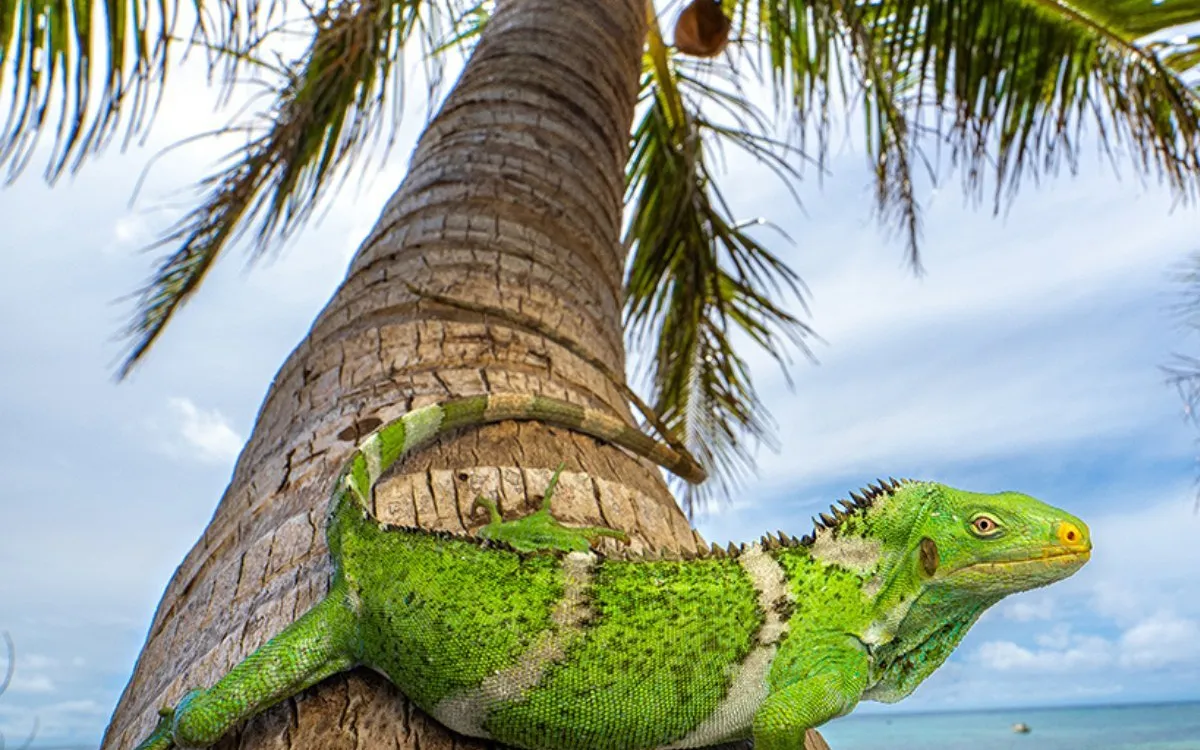
Though the iguanas on the remote islands of Fiji may seem to lead laid-back lives, recent research reveals that their survival involved a remarkable journey. Over the past 30 million years, these fascinating reptiles floated across thousands of miles of ocean on vegetation. This groundbreaking investigation into the Iguanidae family tree—which encompasses approximately 2,100 reptilian species, including the marine iguanas of the Galapagos, tropical chameleons, and desert chuckwallas—has shed light on the evolutionary ties between Fiji iguanas and their more distant relatives in the American Southwest.
The findings indicate that Fiji iguanas are most closely related to the North American desert iguanas (Dipsosaurus dorsalis). This significant genetic proximity, despite the vast geographic distance, led a team of researchers to conclude that a group of ancient desert reptiles once hitched a ride on floating debris, eventually reaching Fiji and thriving there for an impressive 34 million years. This research was published recently in the Proceedings of the National Academy of Sciences.
According to Simon Scarpetta, a herpetologist and paleontologist at the University of San Francisco and the lead author of the study, the Fiji iguana lineage diverged from its closest relatives relatively recently, approximately 30 million years ago. Scarpetta explained that this divergence coincided with volcanic activity that could have created land suitable for colonization. The researchers propose that the primary mechanism of dispersal for these iguanas was rafting on vegetation mats, which allowed them to travel from North America to Fiji while possibly feeding on the raft material during their journey across the Pacific Ocean.
Scarpetta noted that earlier estimates for this trans-Pacific journey ranged from 4 to 12 months, but recent simulations suggest a faster timeline of 2.5 to 4 months. If their conclusions are accurate, the ancestors of Fiji iguanas traveled an astonishing 5,000 miles (8,047 kilometers) from western North America to Fiji, making it the longest-known transoceanic dispersal of a terrestrial vertebrate. This remarkable feat underscores the extraordinary nature of this scientific discovery.
Scarpetta emphasized that iguanas, particularly desert iguanas, are known for their resistance to starvation and dehydration. This resilience would have been crucial for surviving the extensive journey across the Pacific on floating vegetation. “If any group of vertebrates could endure an 8,000-kilometer journey on a mass of vegetation, it would be a desert iguana-like ancestor,” Scarpetta stated.
A thorough genetic analysis involving over 4,000 iguana genes from more than 200 specimens confirmed that Fiji iguanas are closely related to North American desert iguanas. This correlation supports the theory that the lizards arrived in Fiji within the last 34 million years, coinciding with the formation of Fiji’s islands. Co-author Jimmy McGuire, a herpetologist at UC Berkeley, remarked on the surprising nature of this direct connection, stating, “That they reached Fiji directly from North America seems crazy.”
The new research also effectively dismisses previous theories suggesting a South American origin for the Pacific iguanas or the evolution of iguanas from an older lineage that once thrived in the Pacific. Scarpetta pointed out an intriguing possibility regarding the study: whether iguanas might have hopped across various Pacific islands from North America instead of making a single rafting event. However, he noted that no fossil evidence of Fijian iguanas exists beyond Fiji and Tonga.
Today, despite their fascinating evolutionary history, the four species of iguanas found in Fiji and Tonga are endangered. Threats such as habitat loss, predation, and the exotic pet trade have severely impacted their populations. This research serves as a poignant reminder of the lengths living organisms have gone to survive and highlights the urgent need for conservation efforts to protect these remarkable creatures.